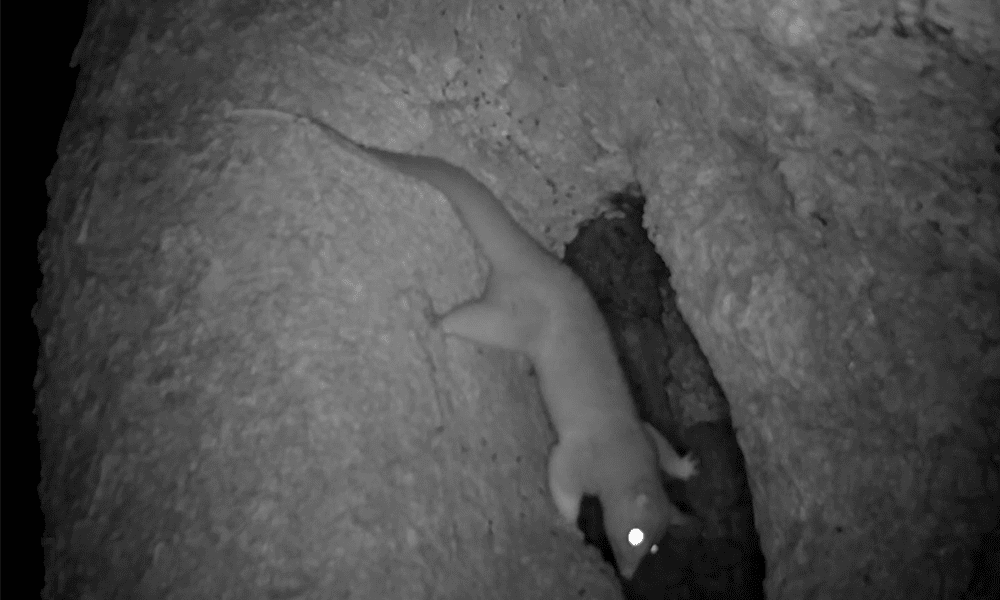Today we meet the Central American woolly opossum, a monkey-like opossum with a tree-swinging lifestyle.
The Central American woolly opossum (Caluromys derbianus) is also known as Derby’s woolly opossum, a fact I didn’t know until I did some research for this article, but jives with the second part of the scientific name. Their Spanish name is zorro de balsa. Zorro is a frequently used Spanish name for mammals.
If you type it into a translating app, it will probably tell you that it translates to fox in English. In Costa Rica (animal names often vary depending on the country), zorro also gets used for opossums and skunks. I would imagine that the zorro de balsa gets its name from frequenting balsa trees to drink nectar from their flowers, but I couldn’t find a resource to back my assertion.
Like many of their opossum cousins, Central American woolly opossums are nocturnal. Researchers in South America found that their level of activity at night is influenced by the amount of light provided by the moon. The fuller the moon, the less active the opossums were. They believe it is easier for them to be spotted by predators when the moon is full and bright.
Central American woolly opossums are almost exclusively arboreal, leading to many monkey-like adaptations. They have a prehensile tail which allows them to have another branch-grabbing limb. They’ve been seen hanging upside down from only their tail while feeding on nectar from treetop flowers or grabbing at flying insects. Other monkey-esque features include dexterous hands, forward facing eyes that aid in depth perception, and a large brain.
Though they range over most of the country and are probably quite common in many areas, I have yet to spot a Central American woolly opossum in the wild. This is mostly due to the fact that I do a lot of dinner cooking, kid wrangling and story reading at night, instead of arboreal mammal spotting (like I assume most freewheeling, bachelor biologists must do).
I did encounter a box-full of large juveniles once at the rehabilitation and release center where I used to work. It was quite a short interaction though. After the first night, I returned to the enclosure to find that half of them had liberated themselves even though I could find no evidence of holes in the cage. After the second night, the cage was empty. They were ready for release it seems.
I started recording woolly opossums with my camera traps when I started placing them in trees. The cameras don’t need to be particularly high up in the tree, but I’ve never recorded one actually walking around on the ground, as you’ll see in the video below.
About the Author
Vincent Losasso, founder of Guanacaste Wildlife Monitoring, is a biologist who works with camera traps throughout Costa Rica. Learn more about his projects on facebook or instagram. You can also email him at: vincent@guanacastewildlifemonitoring.com

